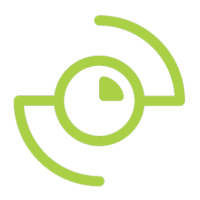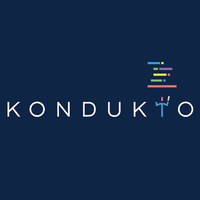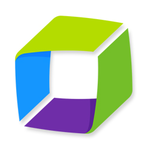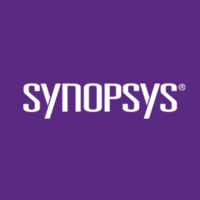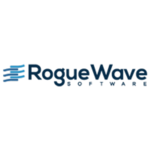Benefits Of Using Static Application Security Testing Tools
Static Application Security Testing (SAST) tools are a critical component of any organization's software development process. These technologies aid in identifying and eliminating security vulnerabilities in the codebase before the application is released, hence averting potential security breaches.
Let's explore, we'll go over the advantages of adopting SAST technologies and how they may assist your firm secure the security and integrity of its applications.
1. Early Detection Of Security Vulnerabilities: One of the key advantages of SAST tools is their ability to detect security flaws early in the software development life cycle. These tools check the source code for potential faults and defects that could lead to security breaches. This enables developers to address these flaws before releasing the application, saving time, effort, and resources in the long run.
2. A Cost-Effective Solution: SAST tools offer a more cost-effective approach than traditional security testing methods. They can scan enormous amounts of code quickly, whereas manual scanning would take a substantial amount of time and resources. This also decreases the need to hire more security specialists, making them a more cost-effective option for enterprises.
3. Reduce Human Error: Humans are prone to making mistakes, which can have major ramifications for an application's security. Human error is not an issue with SAST tools, which produce accurate and dependable findings. This decreases the possibility of missing major security flaws that might go undiscovered during manual checks.
4. Improved Code Quality: SAST tools not only uncover security flaws, but they also aid to enhance code quality overall. These tools can assist developers in writing better and more secure code by identifying coding mistakes such as syntax issues, dead code, and anti-patterns. This results in higher-performing apps with fewer faults and security risks.
5. Complying With Industry: Standards Compliance with industry security standards and laws, such as the OWASP Top 10, is critical for firms seeking to protect their reputation and avoid legal consequences. SAST solutions include compliance tests to guarantee that the code follows these requirements, offering enterprises piece of mind that their applications are secure and compliant.
Important Factors To Consider While Purchasing Static Application Security Testing Tools?
When it comes to purchasing static application security testing (SAST) solutions, there are numerous critical considerations to consider. These tools are critical for detecting and fixing potential security flaws in the code of your software or application.
Let's explore, we will go over the essential variables to consider when assessing and selecting an SAST solution for your organization's needs.
1. Security Coverage: The first and most important consideration is the level of security provided by the SAST technology. It is critical to ensure that the tool can search for and detect vulnerabilities in your programming language and framework. Consider features like vulnerability severity levels and support for industry-standard security testing procedures.
2. Customization And Integration: Different firms use different software development processes and tools. As a result, it is critical to select an SAST tool that allows for customization and easy integration with your current tools and workflows. This ensures that the testing process runs smoothly and efficiently.
3. Accuracy And Confidence: Any SAST tool must be capable of accurately detecting security vulnerabilities. Look for a tool that has a low false-positive rate, indicating that it can distinguish between legitimate vulnerabilities and false alarms. To increase confidence in the testing results, the tool should also provide extensive information and solutions for fixing discovered vulnerabilities.
4. Scalability: As your firm expands, so will your software applications. It is critical to choose an SAST tool that can grow with your organization. Consider the tool's performance and ability to manage huge codebases and frequent code updates to avoid disruptions and delays in your development workflow.
5. Technical Support: Technical support is another important factor to consider when selecting an SAST solution. Look for a vendor who provides 24-hour technical help to resolve any issues or provide guidance during the testing process. Consider the tool's ease of use and the availability of training materials to help your team use it efficiently.
6. Cost: Finally, the tool's cost must be considered. While it may be tempting to choose a lower-priced choice, it is critical to balance the cost with the tool's capabilities and dependability. Investing in a high-quality SAST tool can save you time and money in the long term by allowing you to find and resolve vulnerabilities early in the development process.
What Are The Key Features To Look For In Static Application Security Testing Tools?
When looking for a Static Application Security Testing (SAST) tool, there are a few critical aspects to consider that will assist you in making an informed purchasing decision. These qualities can assist guarantee that the tool you select not only satisfies your current demands, but also has the capacity to handle your organization's future development and security requirements.
1. Comprehensive Vulnerability Detection: The primary goal of an SAST tool is to identify any security flaws in your application's source code. As a result, it is critical to select a tool that provides comprehensive coverage of many types of vulnerabilities, including frequent problems like SQL injection, cross-site scripting, and weak authentication. Choose a tool that can scan several languages and frameworks to deliver a thorough examination of your code.
2. Result Accuracy: While SAST tools automatically scan your code for vulnerabilities, it is critical that the results are accurate and reliable. Look for a tool with a low false positive rate, as this will save your team time by preventing false alerts and focusing on real threats.
3. Integration With Your Development Process: Ensure that the SAST tool you chose integrates effectively with your development process. It should be able to scan code as it is being written, detecting vulnerabilities early in the software development lifecycle (SDLC). Furthermore, the solution should be simple to integrate with your issue tracking and bug management systems, making the remediation process go more smoothly.
4. Customizable And Adaptable Rule Sets: Different firms may have different security requirements and coding standards. A decent SAST tool should have adjustable and adaptable rulesets, allowing you to tailor the scanning process to your individual requirements. It should also let you to define custom rules to discover vulnerabilities that are specific to your code base.
5. Scalability And Performance: As your organization grows, so will your codebase. Choosing an SAST tool that can scale with your development requirements is critical. It should be capable of handling huge and complicated codebases while maintaining performance.
6. Continuous Monitoring: As your applications evolve, new vulnerabilities may be introduced with each code update. A SAST solution that provides continuous scanning and monitoring of your codebase can assist find and mitigate new vulnerabilities as they emerge.
7. Reporting And Analytics: Following each scan, the SAST tool should provide a full report of its findings, preferably including visual aids such as graphs and charts. This will allow your team to better identify the severity of each vulnerability and prioritize their remedial efforts. It should also provide analytics and trends over time, allowing you to monitor the effectiveness of your security measures.
8. Support And Training: Using an SAST tool may necessitate some training for your development team. Look for a product that has detailed documentation, online training and assistance, and a dedicated customer service team to assist you with any inquiries or issues.
Why Do Businesses Need Static Application Security Testing Tools?
Introduction: Businesses today rely largely on software tools to operate efficiently. Applications play an important part in business operations, from handling sensitive client information to executing necessary tasks. However, with an increase in cyber threats and data breaches, organizations must secure the security of their applications. Here's when static application security testing (SAST) technologies come in handy.
Let's explore, we'll go over why businesses need SAST products and how they may profit from them.
1. Identification Of Vulnerabilities: In the realm of software development, code serves as the foundation for all applications. Any flaws or faults in the coding can expose the program to external attackers. SAST tools do a thorough examination of an application's code, assisting businesses in identifying potential security concerns such as SQL injections, cross-site scripting, and buffer overflows. Businesses may secure sensitive data and avoid security breaches by proactively detecting these vulnerabilities.
2. Cost Savings: In the event of a security breach, firms may incur considerable financial losses, including fines, legal bills, and reputational harm. Businesses that invest in SAST technologies can detect and repair vulnerabilities early in the development cycle, lowering the risk of a security breach. This can help businesses avoid substantial financial and reputational damages.
3. Compliance Requirements: In areas like as healthcare, finance, and government, application security is strictly regulated. Failure to comply with these regulations can have serious implications, including large fines and legal action. SAST solutions can assist firms in complying with industry and government requirements by identifying and resolving any security vulnerabilities that may put them at risk.
4. Increased Productivity: Traditional manual code review methods are time-consuming and prone to human mistake. SAST technologies automate code review, saving enterprises time and resources. This enables developers to focus on other vital tasks, resulting in higher productivity and a shorter time to market for apps.
5. Continuous Monitoring: Hackers are always changing their methods for infiltrating applications and stealing critical data. For enterprises, this means that application security is not a one-time fix. SAST technologies provide continuous monitoring, helping enterprises to identify and mitigate new vulnerabilities that may occur while maintaining and updating their applications.
Which Industries Can Benefit The Most From Static Application Security Testing Tools?
As technology advances, the possibility of cyber attacks and data breaches grows in every industry. To protect sensitive information and preserve consumer trust, firms must prioritize application security. This is where Static Application Security Testing (SAST) tools come in handy. These tools scan source code and detect potential vulnerabilities and security problems early in the development process, allowing developers to remedy them before the program goes live. But which industries will profit the most from employing SAST tools? Let's go exploring.
1. Finance & Banking: The finance and banking industry handles highly sensitive information, making it a prominent target for cyber attacks. SAST tools are essential for this business because they may detect security issues in code relating to financial transactions, data storage, and user authentication, among other things. SAST solutions can help financial organizations secure the security and integrity of their online banking portals and mobile applications.
2. Healthcare: The healthcare business is also vulnerable to cyber attacks since it handles personal and sensitive data including medical records and financial information. SAST technologies can assist healthcare businesses in identifying and addressing vulnerabilities in their web and mobile applications, assuring patient data security and compliance with requirements such as HIPAA.
3. Government: Government agencies handle a large amount of sensitive and confidential information, such as national security data and citizen information. SAST technologies can assist government organizations in identifying and fixing security problems in their applications, thereby averting potential data breaches and guaranteeing the privacy and security of citizens' information.
4. Retail & E-commerce: With the development of online purchasing, retail and e-commerce businesses are gathering and keeping massive amounts of client data, including personal and financial information. SAST technologies can assist these organizations in ensuring the security and integrity of their e-commerce platforms and payment systems, thereby protecting client data from cyberattacks.
5. Education: Educational institutions hold a large amount of sensitive data, such as students' personal information, academic records, and financial information. SAST technologies can assist schools and universities in identifying security weaknesses in their systems and apps, thereby protecting student data and maintaining parental and student trust.
Conclusion
To summarize, while selecting a static application security testing solution, it is critical to carefully assess your organization's specific needs and objectives. A thorough grasp of your software development process, application architecture, and security requirements is essential for picking the best solution for your environment.
Throughout this buyer's guide, we've covered the most important variables to consider when evaluating and comparing various static application security testing solutions. It is critical to seek for solutions that provide a variety of functions, such as code scanning, vulnerability assessment, and interoperability with numerous programming languages and frameworks.
Furthermore, ensure that the solution seamlessly integrates into your existing development process and facilitates communication between developers and security teams. This will help to streamline the testing process, making vulnerability remediation more efficient and effective. It is also important to assess the tool's scalability and flexibility, as your organization's needs and requirements may change over time.
Look for technologies that are scalable and can adjust to your changing needs without sacrificing efficacy. Finally, the choice to invest in a static application security testing tool should be made after careful consideration and examination of all of the factors covered in this buyer's guide. By picking the correct technology, your firm can assure the security and dependability of your apps while also preventing potential assaults and breaches. We hope this guidance has helped you make an informed decision.




